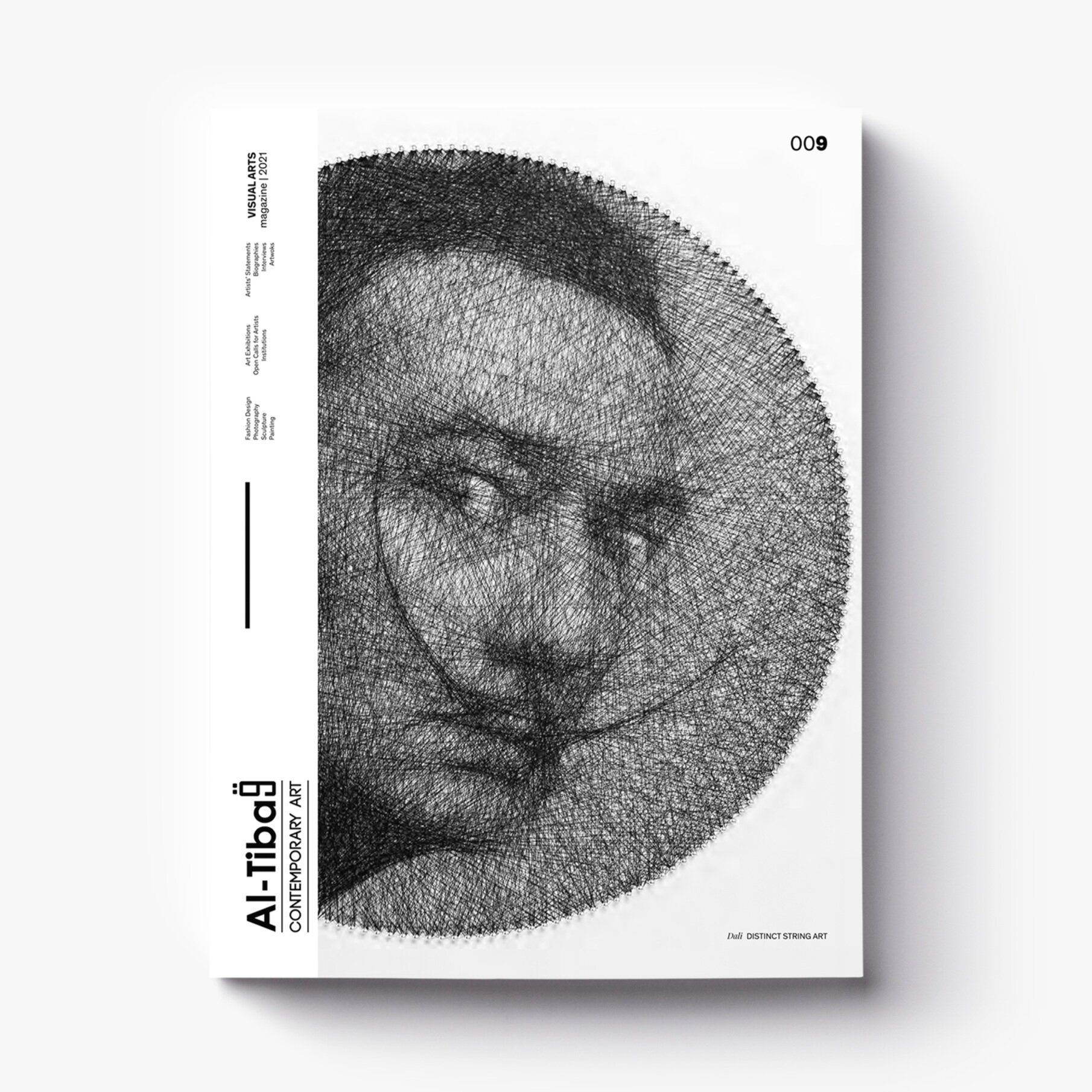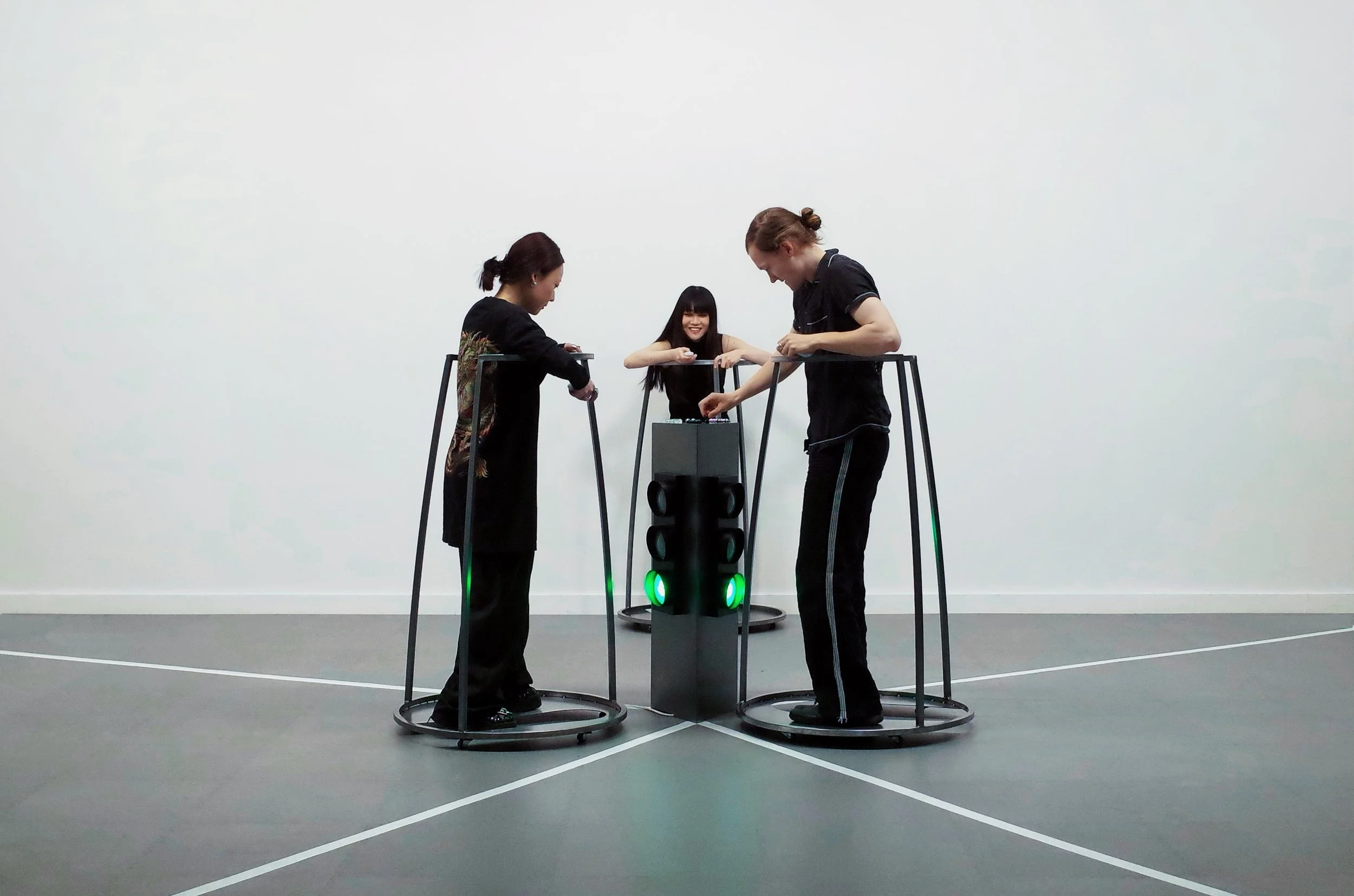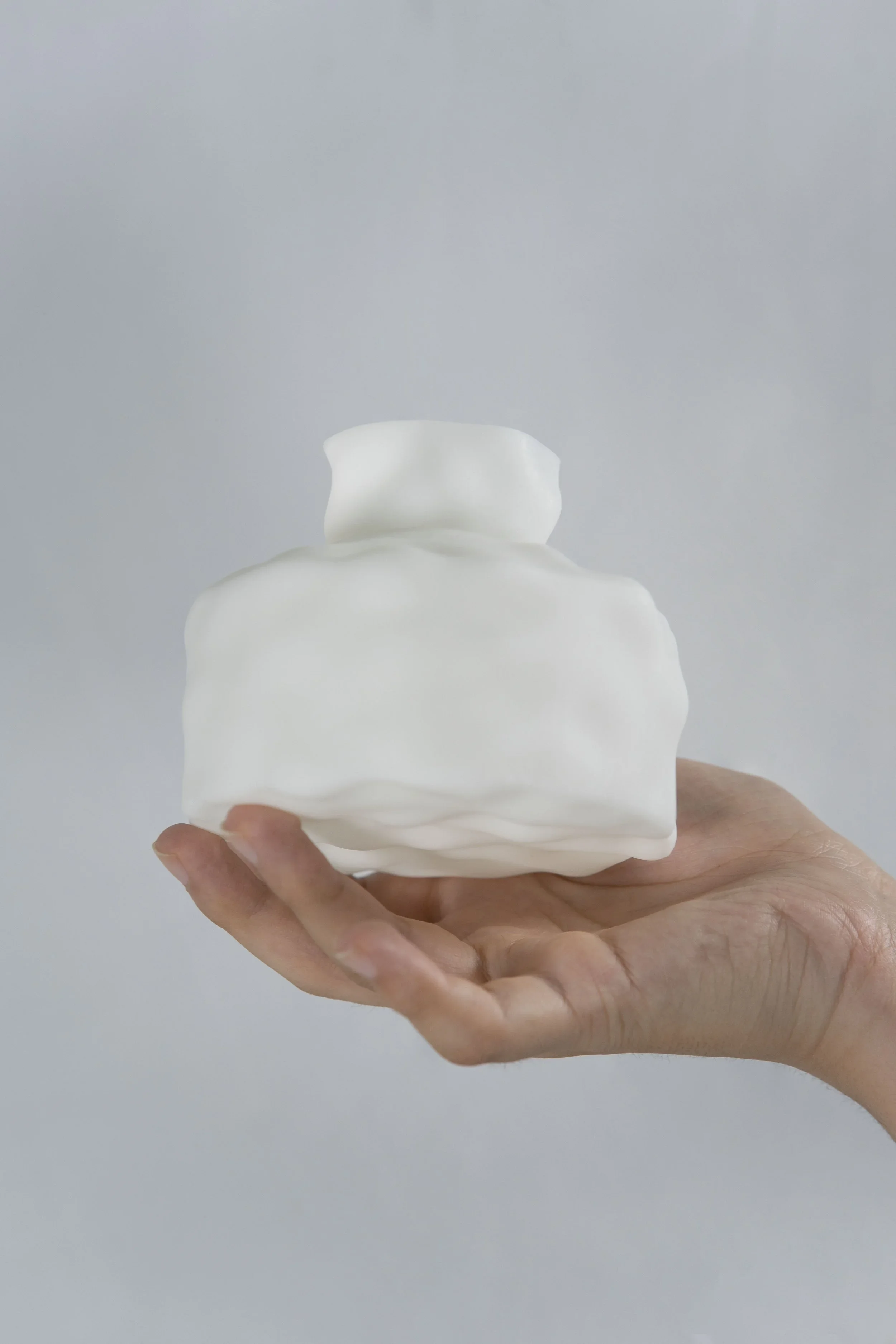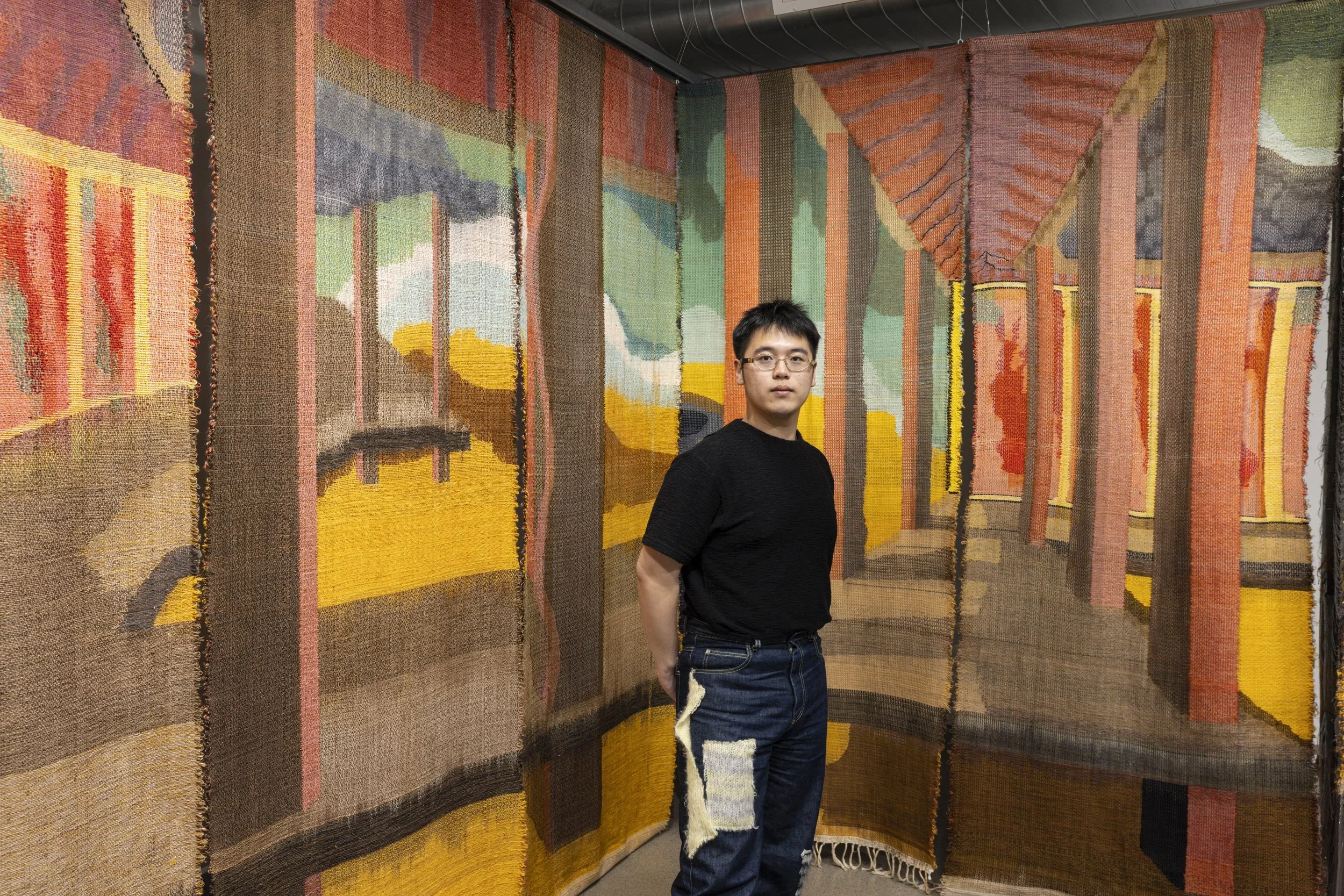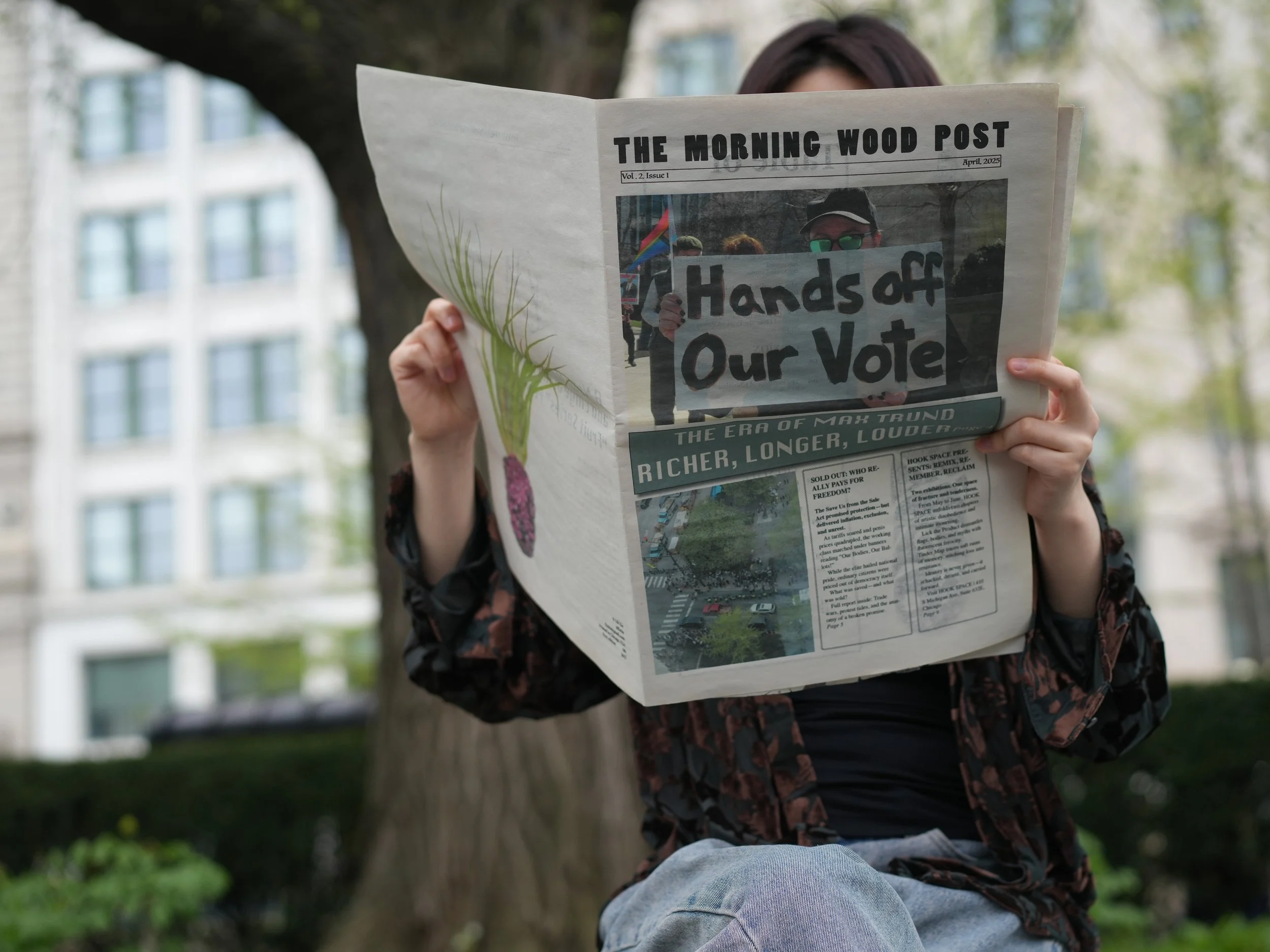10 Questions with BACCA - Benjamin Baccarani
ISSUE09 Art Magazine | Featured Artist
Also known as Bacca, Benjamin Baccarani was born in Cannes, a small town on the French Riviera coastline. As a kid, the great landscape diversity, along with stories of artists such as Cezanne, van Gogh, Picasso, and Matisse first shaped his senses and tastes.
When he turned 19, he moved to California to pursue a Bachelor's in art and design. There, he found a reassuring quality of light reminiscent of his hometown. First trained as a commercial photographer in San Francisco, he chose not to pursue a field that he thought contributed to the mass production of imagery.
Bacca taught himself academic drawing, painting, and woodworking in the company of young artists he met in the city for a few years. Then, however, he realized that he kept being pulled back to photography which was his initial calling.
Early on, he fell in love with the visual vocabulary of artists such as Rothko, Lucio Fontana, and James Turrell. But conceptually speaking, he always could relate more to the Neodada movement. The work of Robert Rauschenberg has been essential in shaping his approach. Bacca believes that the end justifies the means, and he selflessly trusts the process.
benjaminbaccarani.com | @bacca_art
Benjamin Baccarani
ARTIST STATEMENT
Bacca's work is a junction between photography and contemporary painting. He strives to transcend the materiality of photographs to make them more performative for the viewer. That means going beyond its subject matter, its flat surface, and its ephemeral nature. Because his goal is to empower the viewer to shift his perspective from receiver to actor, creating somewhat interactive pieces is key to his practice. He believes that everyone has an internal database of visuals to navigate a world increasingly image-driven. Just as a smell or a sound can evoke a memory, visuals behave similarly. This is what Bacca calls a "personal iconography".
He works essentially with traditional photography and collage. He feels the need to salvage the images he captures as well as the ones he finds on billboards, subway ads, and old magazines. He uses them like quotes that are pulled out of their original context. This gives them a second chance to be viewed and perceived through a different prism. Therefore, the artist collects them and sorts them by color. Instead of working with each image individually, he uses them as raw pigments to paint a larger picture, thus creating a different experience for each viewer.
Bacca doesn't want to reduce his work to color, form, or surface. Instead, every element performs together to bring forth a carefully orchestrated narrative. He doesn't just paint over photographs. The paint becomes a metaphor for the mirror, which invites the viewer to look inward. It draws an initial path for him to dive into his "personal iconography".
The pink flamingo will dance again but this time under the rain, 72.5 x 59.5 x 5 cm, Collage, resin and polished acrylic on panel, 2021 © Benjamin Baccarani
INTERVIEW
You grew up on the French Riviera before moving to California to study art and design. How did these two very different environments influence your work?
I was born in Cannes in 1993 but grew up for most of my childhood in Vallauris, a small town where Picasso used to have his studio. For a long time, the city was a hot spot for artists and craftsmen, and you could feel the energy and the cultural legacy left by those men and women. However, I never consciously paid attention to it. All of this seemed absolutely ordinary to me.
As a kid playing around the house, I remember that there always was a nice piece of fabric, a beautiful pattern, or an intricate shape to look at. My grandfather used to collect antique objects and furniture, which my mother spent time fixing and restoring. So I guess from an early age, I was exposed to this idea that objects could be preserved from the wear of time with a bit of attention and care.
I followed the ordinary French educational system from primary to high school, which leaves very little room for creative activities. Artistically speaking, I wasn't very educated. At least I had never looked at my general understanding of art history through the prism of becoming an artist. The only creative hobby I had was making some whacky photoshop montages with images found on the web. I had never really made anything more evolved than that until I moved to San Francisco.
Moving to California when I turned 19 was very much the first decision I made for myself. I went from a small-town lifestyle where everybody knows you and expects something of you to a laid-back city where nobody pays attention. That was very much the space and quietness I needed to find out what I wanted to do. The contrast between those two environments shone a light on who I was and what fulfilled me as a person.
I can tell he’s been seeing Penny again, 100 x 80 x 5 cm, Collage, resin and polished acrylic on panel, 2021 © Benjamin Baccarani
Tell us more about yourself. Who is Bacca, and how did he become the artist he is today?
I started out in commercial photography because I already had advanced skills in post-production and retouching. Still, I met a few talented artists in the city who showed me a whole universe outside of college. They showed me around the Bay Area and let me into their way of life. They took me to art shows they were casually hosting in their living rooms, garages, or backyards. They weren't waiting on a mighty art world to notice them or acknowledge their work. Instead, they were their own art world.
Those encounters happened at the perfect timing because I was beginning to get more and more frustrated by the digital photographic medium. I wanted to be able to hold my work in my hands. I needed to hang a piece of wood or canvas on a wall or tear the work apart if I wanted to. Seeing this really inspired me to break away from digital mediums to get more hands-on in my practice.
What are your main goals when it comes to your art?
Well, there are mainly two very distinct aspects to my artistic ambition. As a mixed media artist and a fine art photographer, I am very interested in the materiality of the photographic medium.
My initial goal is to bring something new to this medium and approach it from unusual perspectives. When I work, I barely consider the subject of a photograph at all. If it is too distracting, I alter it. I always ask myself, «materially speaking, have I seen everything of this medium, or can it still surprise me? What can I bring to the medium that will upset its fundamental characteristics?»
That's basically my compass. I hope that my work can elevate the debate around photography, its use, and perception in our society.
The other aspect is perhaps more spiritual and less technical.
I want my art to be like the kind of encounter we sometimes have with a seductive stranger. I want it to be the kind of encounter that leaves us with a silly smile on our face or the one we look back to when walking away.
I want it to be as powerful as the song that gives you goosebumps the first time you hear it and in which you still find new meanings the thousand times you listen to it. I want it to be something that upsets your routine, and that makes you step away from your path for a moment.
It's not for me to say whether I succeeded in doing so yet, but my job as an artist is to keep pushing in that direction. I'll keep showing up in the studio as long as I believe I can make this type of experience happen for people.
Dave used to tell pretty poetry, 100 x 80 x 5 cm, Collage, resin and polished acrylic on panel, 2021 © Benjamin Baccarani
Herb will sit and go, 100 x 80 x 5 cm, Collage, resin and polished acrylic on panel, 2021 © Benjamin Baccarani
You use a blend of found images that can be linked directly with the practices of New Dada. How did you discover this movement, and how much did it influence your way of approaching art?
One of the first bodies of work I ever made without using any digital tools was a small series of collages I called Fragments. I created monochromatic images from old architecture magazines, acetate sheet cutouts, and purple stick glue.
The only shades of colors were brought in by the color of the cheap glue and the natural aging of the magazine's paper.
When I showed those works to my teacher Sarah Barsness, she pointed me towards the neo-dada movement. She may have referred to the idea that even the most random objects had an inherent artistic property, a concept primarily exploited by the Neo-Dada artists. However, I couldn't draw any profound connections between my collages and the work produced back then.
It's only a few years later when a friend of mine took me to the newly renovated SF MOMA museum that the jigsaw fell into place. I stumbled upon a painting by Robert Rauchenberg Called «Collection» from 1954, which is regarded as his first hybrid between painting and sculpture. The work instantly spoke to me. This juxtaposition concept was crystal clear, and I felt that it was a direction I had to explore.
At that time, I was struggling to express myself freely through photography. I was angry and disappointed in the medium. I thought that its essential properties were very much limits that could hardly be altered and transcended. So I began relying on painting and drawing a lot more. I was regretfully not using photography in my practice anymore. Rauschenberg's « Collection » spoke to me deeply. It felt like a big push telling me to go back to my inial calling for photography and get back to work. Then again, it had from the beginning of my artistic journey be my medium of preference. I had to go back to push those boundaries, break those limits, and the idea of hybrid seemed highly appropriate.
You introduced the concept of "personal iconography." How would you define it? Could you give us some examples?
I have always been fascinated by the work of Sigmund Freud and Carl Jung. The work and theories they've both developed to unravel mysteries of the human psyche guided the direction of my work to some extent. The idea of personal iconography builds on the concept of archetypes and collective unconscious coined by Jung. The human brain constantly tries to reassure itself by comparing incoming information to ones already stored. Personal iconography is a subconscious visual database that each of us uses to navigate and perceive the world. It is an internal library of images automatically triggered by a new experience that helps us interact with the outside world.
Just as a smell or a taste can evoke a memory, images tend to behave in the same way. Sometimes when you walk by a picture, you have this feeling of "deja-vu." Maybe you remember that trip you took to the countryside, or perhaps you recall that family photo you took with your siblings when you were a kid. Well, that would be your personal iconography being triggered.
Often, we surprise ourselves by feeling oddly familiar with images because we have been exposed to them in the past or have experienced something very similar. The photographic medium is very prone to exposure and contributes to the constant expansion of this personal iconography.
Karen will only drink room temperature champagne, 100 x 80 x 5 cm, Collage, resin and polished acrylic on panel, 2021 © Benjamin Baccarani
Your work stands between photography and painting. How do you blend these two, and what is your creative process like?
In my latest series, "Escape Through the Peephole" I relied on a very straightforward use of the two mediums, and there is no blending at all. In essence, it is pretty simple. It is just some paint over photographs. However, it is still the opposite of what you would traditionally expect of each medium.
My creative process can really be broken down into three main stages. The collage is instinctive, expressive and aims to lay the basis of a narrative, usually a personal anecdote. It's sort of a brainstorming session, if you will.
The second stage is much more tedious. It's is a lot of surface preparation. First, I build a screen that hides the raw materials used to tell that story. Then the last stage consists in refining the narrative so that the viewer is left with room to bring his own ideas and confront them to the artwork.
I approach my collages in a way a painter would approach his color palette. Therefore, what you see is more a game of colors, tones, and texture than a picture of a well-defined subject matter. The collage is the most expressive part of the process. I spend weeks collecting images and sorting them by color, entirely disregarding their subject matter.
When I start a collage, I can just dig in my color-coded drawers, tearing the visuals apart and frenetically gluing them on the surface. That's when I rely the most on my personal iconography to help me make the right call as to where each visual fragment should go and what it may evoke.
The paint that lays over those photographs has none of the characteristics traditionally found in artistic painting. It's monochromatic, absolutely flat, and reflective like the glass of a window or a frame. Nothing in the way I use paint in this series comes close to what I usually look for in a painting. There isn't a single trace of human action. It is really dead flat and reductive of the medium's materiality, but it is what pulls the photographic imagery forward.
Is there anything else you would like to experiment with?
I am still at an early stage of my career, and so far, I've primarily worked in two dimensions. There are lots of directions I have in my mind and that I want to explore. Recently the exhibitions that moved me the most as a viewer are the interactive ones. Olafur Eliasson is a master in that field, for example. I find the work of Larry Bell and Dustin Yellin very inspiring as well. So I want to start experimenting with installations and sculptures. I would like the viewer to interact with my art. I feel the need to start making pieces that send a clear invitation for emulation and interaction.
You have exhibited your works extensively. Did you take part in any online exhibitions recently? And what do you think of them, good opportunities or just a temporary trend?
I took part in a few online shows over the past two years, mostly on social media platforms and online magazines. I really liked it. All of them were nice initiatives often led by artists. They have proven to be a viable alternative during the lockdown. They gave exposure to artists and helped spread culture. However, I believe that it is more suited to certain types of works than to others. It is definitely something worth exploring and developing.
I have worked as a gallery assistant and learned a lot from the art world during that time. I think covid underlined many limits that the art world has reached for years, and galleries have an essential role in taking both the artists and the public to the next era. Online exhibitions are not just a trend, and I would love to see how galleries and museums will be using those in the future. I think new technologies will play a tremendous role in the way we experience art as a society, and I'd love to see galleries be pioneers in that field.
Let’s make another one just like the other one, 100 x 80 x 5 cm, Collage, resin and polished acrylic on panel, 2021 © Benjamin Baccarani
Sadly Stevie ain’t from Boston, 100 x 80 x 5 cm, Collage, resin and polished acrylic on panel, 2021 © Benjamin Baccarani
And what is one new thing that over the past year you have discovered? Did you embrace any new hobby or tried anything new?
I've been playing music for a few years, and lately, I have started assembling and painting my own guitars. I must say it was entertaining to work on such «canvas». My latest series is intimately linked to the history of electric guitars, how they looked and how they perfectly express those 80's retro vibes. I love to understand how things are made and why they work the way they do, so when I picked up the guitar, it was just a matter of time before I started making my own.
Lastly, what are your plans for the rest of the year and 2022? Any new exciting project or exhibition?
I have a new body of work in the making which should be done by the beginning of 2022. It is essentially an extension to my series "Escape Through the Peephole". I have been working on it for the past year but haven't explored all the directions I have in mind yet.
As far as exhibitions are concerned, I am lucky to be represented by Galerie de l'Europe in Paris, which will be showing my work next year. Unfortunately, our last show was interrupted by the second wave of Covid, so we are really counting on the next one to mark the end of these odd times we've all been through. Other than that, I'll be moving my practice from the south of France to Paris this upcoming year. I am really looking forward to enjoying long walks and live music in the city.





